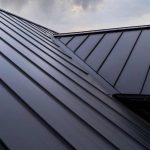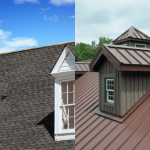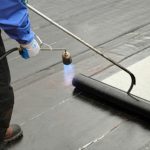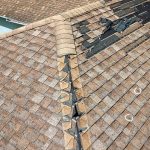Home is a place where when you have to go there, they have to take you in… But what happens if that place is broken or damaged? Would you still want to go there or enjoy some moments of peace and comfort? Definitely, No!
That’s why, today we are primarily focusing on roofing. The roof can typically last as long as your property, but weather damage has a significant impact on its life span. There will come a time when your roof will require repair or replacement,
When something goes wrong with your roof, how do you analyze whether you need a new roof or just need roof repairs? If you’re not a roofer, it can be hard to tell. Therefore, we are going to highlight the roof repair vs. roof replacement question.
Sometimes the answer is obvious; other times, it’s not so cut and dry. Here are the key things to assess and discuss with your roofing contractor when deciding whether to replace or repair your roof.
You May Also Like: Tile Roofs vs. Shingle Roofs: Which one is the best?
Analyze the Costs of Roof Repairs vs Roof Replacement
Before you decide whether to replace or repair your roof, it’s important to get quotes for both options. But how would you compare? If the repairs are inexpensive, they are often worth making.
But on the other side, if the costs are not much less than the replacement cost, then it would be better off replace the roof. Doing so will save you money on additional repairs over the next few years. Moreover, a new roof may save you enough money on energy to make up for the extra cost.
Check the Age of Your Roof:
The older your roof, the more likely it needs replacement. It’s often worth repairing a roof that’s only a few years old. Typically, the type of damage seen on newer roofs is incidental storm damage. You can easily fix it and see your roof will continue protecting your home for the next 20 years.
The type of damage seen on older roofs tends to be more widespread. You can fix the most damaged sections, but a new unit may soon need similar repairs. When a shingle roof is over 25 to 30 years old, you’re always better off replacing it.
You May Also Like: Hail Damage Roof – How to Identify Hail Damage on Your Roof?
Is There Any Structural Damage?
If yes, then it’s relatively easy for roofers to repair the outer layer of your roof, such as the shingles. It’s harder for them to improve the structural elements of your roof, such as the roof deck. To access and repair the roof deck, they must first strip the shingles off the roof. At that point, you might as well have your shingles replaced.
Structural roof deck damage often results from deteriorated singles, anyway. So, by replacing those older shingles, you help protect the roof deck from suffering the same fate again.
What About the Overall Roof Condition?
Don’t just look at the part of the roof that needs repairs. It’s important to check the overall roof too. Are the shingles in good shape, or do they show signs of wear, which include?
- Curling along the edges
- Lifting on one or more edges
- Missing granules
- A dry, crumbly texture
- Cracks and missing corners
Check for the above signs and see if your roof has begun to deteriorate and needs to be replaced. However, if there are shingles outside the “repair area” that appear to be sound and secure, you may only need to repair that section.
Are There Any Leaks or Water Damages?
Leaks and water damage are the most common signs that any homeowner can easily analyze without any difficulty. In fact, leaks are also a common reason why homeowners seek roof repairs. However, not all leaks call for a full replacement. If the leak is confined to one area and hasn’t caused significant structural damage, repairing that section might solve the problem. Leaks often start around areas like chimneys, skylights, or vents where flashing may have deteriorated.
On the other hand, if leaks are widespread or if you notice water damage inside your home, it might be a sign that your roof is failing. Water stains on walls, ceilings, or in the attic, and mold growth are indicators that water has penetrated the roof and caused more extensive damage. If this is the case, a roof replacement will be necessary to fully address the problem and prevent future leaks.
You May Also Like: 4 Popular Types of Metal Roofing
Granule Loss:
Now this is something most homeowners are not aware of. Asphalt shingles have a top layer of granules that help protect them from the elements. Over time, you might notice granules accumulating in your gutters or downspouts. While some granule loss is normal, excessive loss indicates that the shingles are nearing the end of their lifespan.
Granules are essential for protecting your roof from UV rays, so once they’re gone, shingles start to deteriorate much faster. If granule loss is confined to a small area, a repair can solve the issue. However, if it’s widespread, you’ll likely need to replace the roof to prevent more serious problems like leaks or cracking.
Go for Professional Inspection:
Before you make a final decision, it is recommended to have a professional roof inspection. A roofing contractor or a reliable company can assess the condition of your roof and provide expert advice on whether you need roof repair or replacement. They can easily spot issues that you may not notice and help you determine the most cost-effective solution.
You can contact us on our given phone number or fill the form, we offers inspections to help you make an informed decision. We can provide a detailed report on the condition of your roof and estimate the cost of both repairs and replacement, so you can weigh your options.
Conclusion:
Deciding whether to repair or replace your roof depends on several factors, including the age of your roof, the extent of the damage, and the cost of repairs.
Therefore, the best choice is to make timely repairs to extend the life of your roof and save money. However, if the damage is extensive or your roof is nearing the end of its lifespan, a replacement may be the better long-term solution. In case you are not sure about the right solution, you can contact roofing contractors to assess the damage who can suggest something better and reliable.
You May Also Like: How Much Does a Roof Leak Repair Cost?







